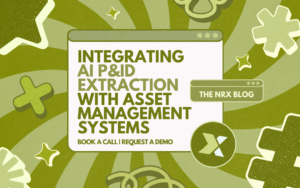Nearly 70% of industrial companies say data quality and structure are the biggest obstacles to successful AI initiatives. In industrial operations, data drives insight. Yet, without the right structure, even vast amounts of asset data lead to inefficiency. An effective asset hierarchy serves as the backbone for systems powered by industrial AI and supports better decisions through improved maintenance and stronger performance.

What is an Asset Hierarchy?
An asset hierarchy is a structured model of physical equipment, processes, and systems. It defines the parent-child relationships between assets, such as a facility, its systems, subcomponents, and equipment. This structure supports a logical representation of how industrial assets are configured and interact.
Why It Matters in Industrial AI
Industrial AI depends on well-labeled and consistently structured datasets. AI models rely on contextual relationships to recognize abnormal behaviour and support accurate decision-making. A poor hierarchy introduces noise and misalignment, which undermines the quality of machine learning outcomes.
When hierarchy levels are consistent, AI algorithms can correctly associate events with the correct component. This enables more precise predictions and historical pattern recognition. For instance, predictive maintenance systems identify vibration anomalies in pumps. However, if asset records are unstructured or duplicated, AI can misclassify the source, and this would send false alerts or missing critical failures.

Best Practices for Building Smarter Hierarchies
Effective asset hierarchies are not just about structure. They reflect best practice in both engineering logic and data science.
Define Clear Naming Conventions
Use consistent asset naming to avoid ambiguity. Industry-standard schemas such as the ISA-95 model help define levels from enterprise down to individual sensors.
Align with Business and Operational Goals
A good hierarchy supports not just maintenance, but also operations and compliance. It should integrate with energy management, safety tracking, and asset performance systems.
Use Condition-Based Tags
Tags reflecting operational status or environment (e.g., exposure to corrosive chemicals) support AI in clustering behaviour and estimating lifespan more accurately.
Build In Scalability
Modern plants evolve. A smart asset hierarchy must accommodate new equipment or systems without requiring rework. Using modular hierarchy design simplifies expansion.
AI-Driven Insights Through Hierarchy Alignment
Structured asset data feeds AI not only through volume but also through its clarity and organization. When a clean asset hierarchy is in place, predictive models can learn more efficiently because the data contains less noise and fewer inconsistencies. Natural language processing tools also perform more effectively, as they can correctly interpret and categorize work orders based on consistent asset references. In addition, visualization platforms become more useful by providing clearer and more accurate root-cause maps, which help teams quickly identify issues and respond with precision.
Companies using structured hierarchies report having a higher ROI from AI-powered reliability tools compared to those with unstructured data.
Conclusion
A smart asset hierarchy is far more than a simple data map. It represents a foundational framework that translates complex and often fragmented asset data into a format that machines and people can understand and use effectively. For organizations pursuing industrial AI, investing in a well-designed hierarchy is not optional. It is essential for unlocking reliable insights and sustaining long-term operational performance.
Integrating AI P&ID Extraction with Asset Management Systems
ISO 14224 vs Other Maintenance Standards: What Sets It Apart?
Building Trust in Your Asset Data: Strategies for Governance
Share this article




